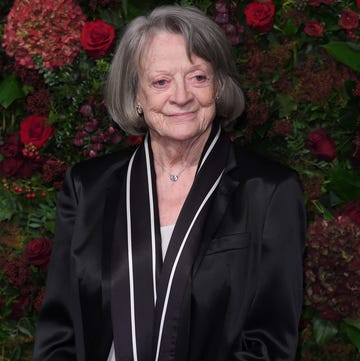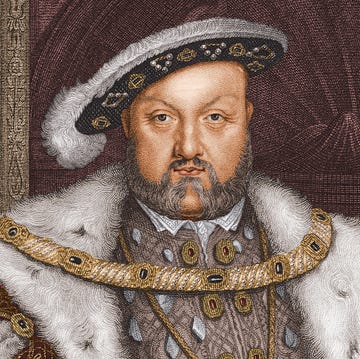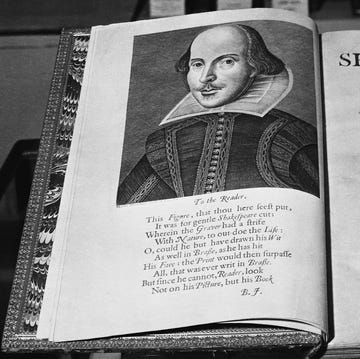William Blake

(1757-1827)

Who Was William Blake?
William Blake began writing at an early age and claimed to have had his first vision, of a tree full of angels, at age 10. He studied engraving and grew to love Gothic art, which he incorporated into his own unique works. A misunderstood poet, artist and visionary throughout much of his life, Blake found admirers late in life and has been vastly influential since his death in 1827.
Early Years
William Blake was born on November 28, 1757, in the Soho district of London, England. He only briefly attended school, being chiefly educated at home by his mother. The Bible had an early, profound influence on Blake, and it would remain a lifetime source of inspiration, coloring his life and works with intense spirituality.
At an early age, Blake began experiencing visions, and his friend and journalist Henry Crabb Robinson wrote that Blake saw God's head appear in a window when Blake was 4 years old. He also allegedly saw the prophet Ezekiel under a tree and had a vision of "a tree filled with angels." Blake's visions would have a lasting effect on the art and writings that he produced.
The Young Artist
Blake's artistic ability became evident in his youth, and by age 10, he was enrolled at Henry Pars' drawing school, where he sketched the human figure by copying from plaster casts of ancient statues. At age 14, he apprenticed with an engraver. Blake's master was the engraver to the London Society of Antiquaries, and Blake was sent to Westminster Abbey to make drawings of tombs and monuments, where his lifelong love of gothic art was seeded.
Also around this time, Blake began collecting prints of artists who had fallen out of vogue at the time, including Durer, Raphael and Michelangelo. In the catalog for an exhibition of his own work in 1809, nearly 40 years later, in fact, Blake would lambast artists "who endeavour to raise up a style against Rafael, Mich. Angelo, and the Antique." He also rejected 18th-century literary trends, preferring the Elizabethans ( Shakespeare , Jonson and Spenser) and ancient ballads instead.
The Maturing Artist
In 1779, at age 21, Blake completed his seven-year apprenticeship and became a journeyman copy engraver, working on projects for book and print publishers. Also preparing himself for a career as a painter, that same year, he was admitted to the Royal Academy of Art's Schools of Design, where he began exhibiting his own works in 1780. Blake's artistic energies branched out at this point, and he privately published his Poetical Sketches (1783), a collection of poems that he had written over the previous 14 years.
In August 1782, Blake married Catherine Sophia Boucher, who was illiterate. Blake taught her how to read, write, draw and color (his designs and prints). He also helped her to experience visions, as he did. Catherine believed explicitly in her husband's visions and his genius, and supported him in everything he did, right up to his death 45 years later.
One of the most traumatic events of Blake's life occurred in 1787, when his beloved brother, Robert, died from tuberculosis at age 24. At the moment of Robert's death, Blake allegedly saw his spirit ascend through the ceiling, joyously; the moment, which entered into Blake's psyche, greatly influenced his later poetry. The following year, Robert appeared to Blake in a vision and presented him with a new method of printing his works, which Blake called "illuminated printing." Once incorporated, this method allowed Blake to control every aspect of the production of his art.
While Blake was an established engraver, soon he began receiving commissions to paint watercolors, and he painted scenes from the works of Milton, Dante , Shakespeare and the Bible.
The Move to Felpham and Charges of Sedition
In 1800, Blake accepted an invitation from poet William Hayley to move to the little seaside village of Felpham and work as his protégé. While the relationship between Hayley and Blake began to sour, Blake ran into trouble of a different stripe: In August 1803, Blake found a soldier, John Schofield, on the property and demanded that he leave. After Schofield refused and an argument ensued, Blake removed him by force. Schofield accused Blake of assault and, worse, of sedition, claiming that he had damned the king.
The punishments for sedition in England at the time (during the Napoleonic Wars) were severe. Blake anguished, uncertain of his fate. Hayley hired a lawyer on Blake's behalf, and he was acquitted in January 1804, by which time Blake and Catherine had moved back to London.
Later Years
In 1804, Blake began to write and illustrate Jerusalem (1804-20), his most ambitious work to date. He also began showing more work at exhibitions (including Chaucer's Canterbury Pilgrims and Satan Calling Up His Legions ), but these works were met with silence, and the one published review was absurdly negative; the reviewer called the exhibit a display of "nonsense, unintelligibleness and egregious vanity," and referred to Blake as "an unfortunate lunatic."
Blake was devastated by the review and lack of attention to his works, and, subsequently, he withdrew more and more from any attempt at success. From 1809 to 1818, he engraved few plates (there is no record of Blake producing any commercial engravings from 1806 to 1813). He also sank deeper into poverty, obscurity and paranoia.
In 1819, however, Blake began sketching a series of "visionary heads," claiming that the historical and imaginary figures that he depicted actually appeared and sat for him. By 1825, Blake had sketched more than 100 of them, including those of Solomon and Merlin the magician and those included in "The Man Who Built the Pyramids" and "Harold Killed at the Battle of Hastings"; along with the most famous visionary head, that included in Blake's "The Ghost of a Flea."
Remaining artistically busy, between 1823 and 1825, Blake engraved 21 designs for an illustrated Book of Job (from the Bible) and Dante's Inferno . In 1824, he began a series of 102 watercolor illustrations of Dante — a project that would be cut short by Blake's death in 1827.
Death and Legacy
In the final years of his life, Blake suffered from recurring bouts of an undiagnosed disease that he called "that sickness to which there is no name." He died on August 12, 1827, leaving unfinished watercolor illustrations to Bunyan's Pilgrim's Progress and an illuminated manuscript of the Bible's Book of Genesis. In death, as in life, Blake received short shrift from observers, and obituaries tended to underscore his personal idiosyncrasies at the expense of his artistic accomplishments. The Literary Chronicle , for example, described him as "one of those ingenious persons ... whose eccentricities were still more remarkable than their professional abilities."
Unappreciated in life, Blake has since become a giant in literary and artistic circles, and his visionary approach to art and writing has not only spawned countless, spellbound speculations about Blake, they have inspired a vast array of artists and writers.
QUICK FACTS
- Name: William Blake
- Birth Year: 1757
- Birth date: November 28, 1757
- Birth City: London, England
- Birth Country: United Kingdom
- Gender: Male
- Best Known For: William Blake was a 19th-century writer and artist who is regarded as a seminal figure of the Romantic Age. His writings have influenced countless writers and artists through the ages.
- Fiction and Poetry
- Christianity
- Astrological Sign: Sagittarius
- Royal Academy of Art's Schools of Design
- Death Year: 1827
- Death date: August 12, 1827
- Death City: London, England
- Death Country: United Kingdom
We strive for accuracy and fairness.If you see something that doesn't look right, contact us !
CITATION INFORMATION
- Article Title: William Blake Biography
- Author: Biography.com Editors
- Website Name: The Biography.com website
- Url: https://www.biography.com/authors-writers/william-blake
- Access Date:
- Publisher: A&E; Television Networks
- Last Updated: May 27, 2021
- Original Published Date: April 2, 2014
- I am under the direction of messengers from Heaven daily and nightly.
- The vision of Christ that thou dost see is my vision's greatest enemy. Both read the Bible day and night, but thou readst black where I read white.

Famous British People

Ralph Fiennes

Liam Payne’s Girlfriend Speaks Out After His Death

Daniel Day-Lewis

Maggie Smith

Alan Cumming

Olivia Colman

Richard III

20 Shakespeare Quotes

William Shakespeare

Andy Murray

Heilbrunn Timeline of Art History Essays
William blake (1757–1827).
Songs of Experience: The Tyger
William Blake
The Angel Appearing to Zacharias
The Parable of the Wise and Foolish Virgins
Angel of the Revelation (Book of Revelation, chapter 10)
Elizabeth E. Barker Department of Drawings and Prints, The Metropolitan Museum of Art
October 2004
William Blake (1757–1827), one of the greatest poets in the English language, also ranks among the most original visual artists of the Romantic era . Born in London in 1757 into a working-class family with strong nonconformist religious beliefs, Blake first studied art as a boy, at the drawing academy of Henry Pars. He served a five-year apprenticeship with the commercial engraver James Basire before entering the Royal Academy Schools as an engraver at the age of twenty-two. This conventional training was tempered by private study of medieval and Renaissance art; as revealed by his early designs for Edward Young’s Night Thoughts ( Nature revolves, but Man advances ), Blake sought to emulate the example of artists such as Raphael, Michelangelo, and Dürer in producing timeless, “Gothic” art, infused with Christian spirituality and created with poetic genius.
In 1782, Blake married Catherine Boucher (1762–1831), an impoverished grocer’s daughter who would become his studio assistant. Blake now threw his energies into developing his career as an engraver, opening a short-lived print shop with a fellow Basire apprentice (James Parker) in 1784, before striking out on his own ( Job, a Historical Engraving ). The great advance in Blake’s printmaking occurred in 1787, following the untimely death, probably from tuberculosis, of the artist’s beloved younger brother Robert, who had been living with William and Catherine since 1784. Blake reported discovering his wholly original method of “relief etching”—which creates a single, raised printing surface for both text and image—in a vision of Robert soon after his death. Relief etching allowed Blake to control all aspects of a book’s production: he composed the verses, designed the illustrations (preparing word and image almost simultaneously on the same copper printing plate), printed the plates, colored each sheet by hand (where necessary), and bound the pages together in covers. The resulting “illuminated books” were written in a range of forms—prophecies, emblems, pastoral verses, biblical satire, and children’s books—and addressed various timely subjects—poverty, child exploitation, racial inequality, tyranny, religious hypocrisy. Not surprisingly, these works rank among Blake’s most celebrated achievements ( 17.10.42 ; The Ancient of Days ; Los, his Spectre; and Enitharmon before a Druid Temple ).
Blake’s technical experiments of the 1790s culminated in a series of large color prints notable for their massive size and iconic designs. Unaccompanied by any text, they comprise his most ambitious work as a visual artist. No commission or public exhibition is recorded, and the intended program of the group remains uncertain: of the twelve known designs, many of the subjects—drawn from the Bible, Shakespeare ( 58.603 ), Milton, and other sources ( Newton )—function as pairs.
Blake described his technique as “fresco.” It appears to be a form of monotype: using oil and tempera paints mixed with chalks, Blake painted the design onto a flat surface (a copperplate or piece of millboard), from which he pulled the prints simply by pressing a sheet of paper against the damp paint. He finished the designs in ink and watercolor , making each—rare—impression unique.
For Blake, the Bible was the greatest work of poetry ever written, and comprised the basis of true art, as opposed to the false, pagan ideal of classicism. He found a sympathetic patron in Thomas Butts (1757–1845), a prosperous Swedenborgian (a member of the Protestant sect founded by the eighteenth-century Swedish scientist, philosopher, theologian, and visionary Emanuel Swedenborg). Butts amassed a small fortune as a clerk in the office of the Muster Master General, and became Blake’s most loyal patron and closest friend. During the decade 1799–1809, Butts commissioned from Blake a series of illustrations to the Bible that included about fifty tempera paintings ( 51.30.1 ) and more than eighty watercolors ( 14.81.2 ). These focus on Old Testament prefigurations of Christ, the life of Christ , and apocalyptic subjects from the Book of Revelation, although the series’ exact program and its intended display remain unclear.
For the rest of his life, Blake continued to develop his art on an inward-looking, imaginative trajectory. Whereas notable contemporaries such as J. M. W. Turner and John Constable found the subjects of their art in the landscape, Blake sought his (primarily figural) subjects in journeys of the mind. (Indeed, he never traveled outside of Britain and, aside from a brief period on the southern coast of England—where he worked for the poet William Hayley in Felpham from 1800 to 1803—spent his entire life in London.) In addition to the Bible and his own writings, Blake drew on other texts—most notably, Dante ( Beatrice addressing Dante from the Car )—and found a seemingly inexhaustible source of inspiration in his own fertile mind ( The Ghost of a Flea ).
Barker, Elizabeth E. . “William Blake (1757–1827).” In Heilbrunn Timeline of Art History . New York: The Metropolitan Museum of Art, 2000–. http://www.metmuseum.org/toah/hd/blke/hd_blke.htm (October 2004)
Further Reading
Bindman, David. William Blake: His Art and Times . Exhibition catalogue. New Haven: Yale Center for British Art, 1982.
Butlin, Martin. William Blake . Exhibition catalogue. London: Tate Gallery, 1978.
Hamlyn, Robin, and Michael Phillips. William Blake . Exhibition catalogue. New York: Harry N. Abrams, 2001.
Additional Essays by Elizabeth E. Barker
- Barker, Elizabeth E.. “ The Printed Image in the West: Mezzotint .” (October 2003)
- Barker, Elizabeth E.. “ Joseph Mallord William Turner (1775–1851) .” (October 2004)
- Barker, Elizabeth E.. “ John Constable (1776–1837) .” (October 2004)
- Barker, Elizabeth E.. “ Watercolor Painting in Britain, 1750–1850 .” (October 2004)
Related Essays
- Albrecht Dürer (1471–1528)
- John Constable (1776–1837)
- Romanticism
- The Salon and the Royal Academy in the Nineteenth Century
- Watercolor Painting in Britain, 1750–1850
- Ernest Hemingway (1899–1961) and Art
- Joseph Mallord William Turner (1775–1851)
- The Printed Image in the West: Engraving
- Shakespeare and Art, 1709–1922
- Shakespeare Portrayed
List of Rulers
- List of Rulers of Europe
- Great Britain and Ireland, 1600–1800 A.D.
- Great Britain and Ireland, 1800–1900 A.D.
- 18th Century A.D.
- 19th Century A.D.
- Architecture
- Biblical Scene
- British Literature / Poetry
- Christianity
- Deity / Religious Figure
- Great Britain and Ireland
- Italian Literature / Poetry
- Literature / Poetry
- New Testament
- Old Testament
- Pastoral Scene
- Printmaking
- Religious Art
Artist or Maker
- Blake, William
- Constable, John
- Dürer, Albrecht
- Turner, Joseph Mallord William
Online Features
- 82nd & Fifth: “Be Prepared” by Constance McPhee
- Connections: “Endings” by Chris Coulson
- Connections: “Poetry” by Jennette Mullaney
